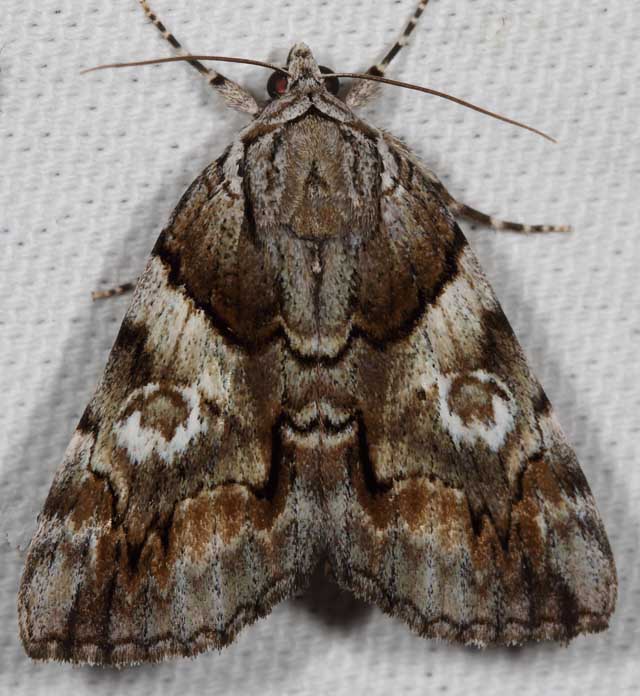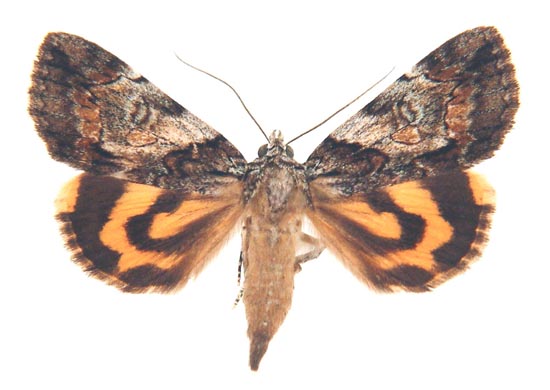Catocala pretiosa
kah-TOCK-uh-lahmpret-ee-OH-suh
Lintner, 1876

Catocala pretiosa female, Louisiana, courtesy of Vernon A. Brou.
This site has been created by Bill Oehlke
Comments, suggestions and/or additional information are welcomed by Bill.
| TAXONOMY:
Superfamily: Noctuoidea
Family: Noctuidae
Group: Noctuinina
Subfamily: Catocalinae
Genus: Catocala, Schrank, 1802
|
DISTRIBUTION:
It is thought to be near extinction in Ohio and New York and is
probably quite localized in other eastern states.
There are also reports from
Illinois,
Maine,
Maryland and
New Hampshire.

Catocala pretiosa, Trinity River Refuge, Liberty County, Texas,
April 11, 2020, Stuart Marcos, id by Larry Gall.
Florida to
Texas.
This subspecies is now equated with the nominate species Catocala pretiosa and as such can also be found in
Alabama,
Arkansas,
Georgia,
Mississippi,
Missouri,
and South Carolina.
This species is quite similar to crataegi and mira, but pretiosa has considerable creamy white colouration in the
median area. The lower portion of the basal area is also light, not dark as in crataegi.
The inner black band of the hindwing forms a loop and the outer band is broken (not complete as in mira, followed by a dot that tapers to the anal angle.
Larry Gall has informed me that Catocala pretiosa texarkana is now a synonym of Catocala pretiosa.

Catocala pretiosa texarkana = Catocala pretiosa, by of Vernon A. Brou, Louisiana.
This site has been created by
Bill Oehlke. Comments, suggestions and/or additional information are welcomed by Bill.
FLIGHT TIMES AND PREFERRED FOOD PLANTS:
Catocala pretiosa flies as a single generation with moths on the wing from May into early June.
The Catocala pretiosa caterpillar feeds on Amelanchier, Malus, Photinia arbutifolia, and Prunus maritima.
ECLOSION:
Adults eclose from pupae formed under leaf litter.
SCENTING AND MATING:
Catocala pretiosa females emit an airbourne pheromone and males use their antennae to track the scent plume.
EGGS, CATERPILLARS, COCOONS, AND PUPAE:
Eggs are deposited on tree bark in the fall and hatch the following spring.
Mature larvae Image courtesy of |
 |
Larval Food Plants
Listed below are primary food plant(s) and alternate food plants.
It is hoped that this alphabetical listing followed by the common
name of the foodplant will prove useful. The list is not exhaustive,
although some species seem very host specific.
Experimenting with closely related foodplants is worthwhile.
Amelanchier.......
Malus
Photinia arbutifolia
Prunus maritima
|
|
This page is brought to you by Bill Oehlke and the
WLSS. Pages are on space rented from Bizland. If you would like to become a "Patron of the Sphingidae/Catocala Sites",
contact Bill.
Please send sightings/images to Bill. I will do my best to respond to requests for identification help.
Enjoy one of nature's wonderments: Live Saturniidae (Giant Silkmoth) cocoons.

|

To show appreciation for this site, click on the flashing
butterfly to the left, a link
to many worldwide insect sites. |




